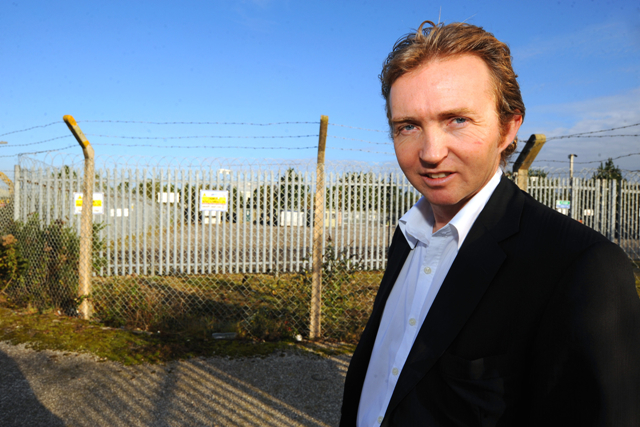Rock Star: British geologist scores fund for geothermal power


The United Downs industrial site in southwest England sits near the crumbling stone towers of several disused tin mines - the windswept relics of the area’s wealthier past.
But when geologist Ryan Law looks at it, he sees hot potential to stoke up the region’s economic and renewable energy future.
Law and his small London-based geothermal power company yesterday landed a £6 million ($9.6 million) government grant to squeeze onto a tiny sliver of United Downs and drill 3 miles down to sizzling hot granite.
His company, Geothermal Engineering Ltd., plans to eventually pump down water that would absorb heat, rise to the surface, run through a heat exchanger, create steam and drive a turbine for a 10 megawatt electricity station – enough for 20,000 homes connected to the grid.The plant would also generate 50 megawatts of heat to warm local buildings, possibly including schools and swimming pools.
Law is on the vanguard of the “hot dry rocks” geothermal movement, also known as “deep geothermal" and “enhanced geothermal.”Unlike the more spectacular roiling geothermal power of volcanic areas like Iceland, deep geothermal does not require a handy nearby fault line, geyser or near-surface lava flow.Instead, it simply makes use of more mundanely heated rock.
In Law’s case, he’s taking advantage of the substantial granite that sits below England’s southwest counties of Devon and Cornwall at around 175-to-200 degrees C.Granite warms because it slowly and radioactively decays (remember that next time you’re marvelling at Yosemite’s majestic outcroppings). Law’s closed loop system does not transfer any radioactivity, as the pumped water continually circulates up and down through the ground, the heat exchanger and back to the ground.
The United Downs project near Redruth, Cornwall, is the first of what Law hopes will be about 25 similar geothermal stations that he’ll build in the area, generating about 300 megawatts of electricity.
“DECC (the UK’s energy department) has predicted that Cornwall alone has the potential to generate up to 1 gigawatt of electricity,” Law told SmartPlanet. “That is a target worth aiming for. The South West has a great geothermal resource and developing this resource will mean more jobs, more British engineering expertise, and more clean energy for the country.” Like solar and wind, geothermal can help wean the world off of volatile and CO2-emitting fossil fuels. And it can provide constant power, rather than waiting until the sun shines or wind blows.
Deep geothermal has huge potential around the world.A 2006 MIT report noted that the US has enough geothermal heat to theoretically meet 2000 times its primary energy needs, and that technology such as Law’s could realistically supply 10% of U.S. electricity by 2050.A recent Google-funded report from the SMU Geothermal Laboratory also noted a ton of potential.
Law received planning permission for his Cornwall project a little over a year ago. He’ll wedge onto about an acre of United Downs, near print and auto body shops, small business offices and a “banger raceway” – a place where Brits race beat-up cars.
He hasn’t yet started drilling because the process is expensive. The £6 million grant from the UK’s Regional Growth Fund will help assure that he starts drilling by the end of 2012, he says. He’s still hoping to raise additional private backing – he has said in the past that his first phase will require £12.5 million.
The grant was welcome news following a disappointment two weeks ago, when in a separate funding scheme called the Renewable Obligation program, the UK’s energy department merely held geothermal steady rather than raising its priority.
The technology comes with risks. Tiny earthquakes are common, just as they are with any drilling project. That’s rarely a problem, although it did halt a job in Switzerland about 5 years ago. And expensive drilling could in the end go off course and fail to hit hot rock. Google-backed geothermal firm AltaRock Energy two years ago abandoned a similar project in California after finding what it called “geological anomalies”.
Law is confident that he’ll hit hot rock. He’s drawing on 14 years of research from the UK government's 1976–1990 Hot Dry Rocks project project in nearby Rosemanowes. Not only is the rock below Redruth hot, but it’s loose, which will make it easier to run water throw and reduce any seismic activity, he says.
In an area that once pulled tin out of the ground for riches, Law could soon be mining for heat in Cornwall.
More hot earth and government funding:
- Google project notes U.S. geothermal potential
- UK: Hard lessons on subsidizing renewable energy
- Iceland cometh
- Obama goes volcanic
- India and Iceland: The lion and the mouse
This post was originally published on Smartplanet.com